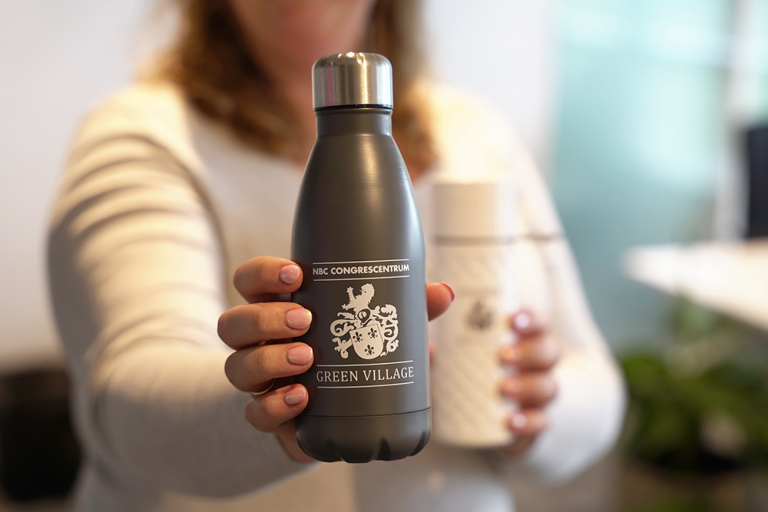Tested: 6 brainstorm techniques to boost your creativity
Randomly brainstorming is often not the right way to reach a 'eureka moment.' Our brains need a nudge in the right direction to stimulate creativity. Fortunately, there are various techniques for this. We provide six examples of brainstorm techniques to maximize the output of your brainstorming session. How do we know? We tested them ourselves!


Brainstorm technique 1: brainwriting
Brainwriting, also known as a brain dump, leads to multiple original results during a brainstorming session. Choose a specific topic or formulate it more broadly. For example: what can we do to pleasantly surprise our customers?
Here’s how to proceed:
Step 1: For ten minutes, all participants write down as many ideas as possible that could answer your question. Everything is allowed; no idea is too strange. There is no judgment, only writing.
Step 2: After ten minutes, discuss the ideas. Additions and/or alternatives can be mentioned. Avoid discussions or arguments, as they hinder creativity.
Step 3: Filter out the best ideas and write them on a large sheet. Examine the ideas and turn them into action points. You can also combine different ideas, which further stimulates creativity.
Supplies:
– Multiple sheets of paper
– Pen
– Large sheet or flip chart
Technique assessment:
This brainstorming technique is a good way to let everyone have their say. It gives a fair chance to those who may not usually be outspoken or daring enough to share their opinions. They might be full of good ideas. This technique is applicable to any type of question with a diverse group of people. We think we’ll use this technique more often!
Brainstorm technique 2: mind mapping
An age-old brainstorming technique you’re probably familiar with is mind mapping. On a board, the brainstorming leader writes the central word, after which everyone takes turns mentioning a related word. There are no wrong answers since there is no clear end goal. However, the chances of generating a useful idea are high.
Choose one central theme or word and draw lines to related items. How you format this is up to you. Think of images, texts, or small drawings. For five minutes, all participants call out words, which the brainstorming leader notes. The individual lines can also be connected, eventually leading to other concepts. This results in a web of elements related to the main theme, providing much input for designing new concepts.
Supplies:
– Large paper sheet or flip chart
– Marker
Technique assessment:
With this technique, you often jump from one result to another. Be careful not to get lost in the number of words you keep writing down. You might lose focus and not formulate a clear answer. Limit this technique to five minutes. We found ourselves so lost in word combinations that it no longer related to our original question. Ensure that you keep the central question in mind despite combining words.
Brainstorm technique 3: superhero
For this technique, you imitate a superhero. Choose a superhero beforehand and bring them to life. How? By seeking a solution to the problem from the superhero’s perspective. Formulate your central question and then try to answer it with the question: “How would Batman do it?” You’ll likely get the most hysterical ideas. The trick is to turn these ideas into concrete action points. With superpowers, much more becomes possible. Here are some superheroes to get you started: Batman, Superman, Catwoman, Black Widow. Have fun!
Supplies:
– Paper
– Pen
Technique Assessment:
A technique we were not familiar with but enjoyed a lot. It provided many funny moments but, unfortunately, no concrete plans. The fun aspect is that it removes boundaries, allowing you to say anything (im)possible. It changes your perspective as you embody the superhero, viewing the problem through their eyes, making most problems seem trivial. The most diverse answers emerged, making it hard to come up with realistic solutions. If you need to develop a creative concept, this technique can certainly help!
Brainstorm technique 4: randomness plays a big role
As the name suggests, randomness plays a significant role in this brainstorming method. The goal is to distance yourself from the original question by associating random words, forcing you to think differently. The more you detach, the more creative you become.
Step 1: Choose a random word by flipping through a non-technical magazine with your eyes closed.
Step 2: Write down ten words that this word makes you think of.
Step 3: Randomly pick one association.
Step 4: Think about how this association can inspire new ideas for the original question.
Supplies:
– Various magazines
– Pen and paper
– Large sheet
Technique sssessment:
This technique is useful for developing creative concepts. If you’re seeking concrete answers, this technique might be too creative. This was our conclusion as it raised more questions than answers. This technique is best used when, for example, organizing a client event with no predetermined content. The vaguer the question, the more useful this technique is!
Brainstorm technique 5: better well-stolen than poorly thought up
This simple exercise might feel like stealing ideas, but good ideas from others can inspire new ones for you.
Here’s how to proceed:
Step 1: Write down the name of a company that inspires you. Describe their company culture and their marketing and communication approach. This forces you to put yourself in their shoes and detach from your own company. Then describe the idea you liked: how they do it and why you think it’s successful.
Step 2: Hang the sheets with companies and their ideas side by side and start a new template for your company. Follow the same steps: first, your company’s name, then its culture and marketing and communication approach. Brainstorm what a great idea from your company could be. Since it’s a brainstorm, think as broadly and wildly as you can. Copy as much from the companies you just described as you want; better well-stolen than poorly thought up.
Step 3: Rate all ideas on a scale of 1 to 10. This is subjective. Don’t overthink it. Further develop the top 2 or 3 highest-scoring ideas.
Supplies:
– Canvas
– Pen
Technique assessment:
A good technique for designing creative concepts. This brainstorming technique requires more time than usual. You can prepare your team by having them complete step 1 a few days in advance. Apart from developing creative concepts, this technique also provides clarity about your company’s identity.
Brainstorm technique 6: customer desire map
To explore the target audience or a problem, you can use the customer desire map canvas. Write down the three aspects mentioned below. Then, all brainstorming participants write ideas on post-its and stick them on a large sheet. Participants will see each other’s post-its and get inspired to come up with new ideas.
Example from NBC Congrescentrum:
- Hopes and dreams -> What does the client want to achieve?
- Pains and fears -> What is the client afraid of if this doesn’t happen?
- Barriers and uncertainties -> What prevents the client from achieving the goal?
Supplies:
– Large sheet of paper
– Marker
Technique assessment:
This technique gives you a lot of guidance in finding answers to your questions. Initially, it provides a fresh perspective on your company’s ins and outs. It clarifies certain topics, allowing you to act on them. See what creative concepts you can come up with when you map out the pains and fears. We recommend starting with this exercise and then building on it with another brainstorming technique.
Read more
More inspiration & tips

Sustainable giveaways for your event
Sustainability is increasingly becoming a decisive factor when choosing locations, products, or services. This also applies to the giveaway that guests receive during an event. It's high time to reinvent the traditional giveaway, such as the plastic pen, notebook, or keychain. In this blog, we offer you several ideas for sustainable giveaways that not only help the environment but also keep the memory of your event alive.

Discover the Schirm-Bar and Kris Kross Amsterdam
Did you know that our colleagues collectively worked nearly 15,000 hours last week to ensure the success of the events? We will share this and many more facts with you next week. As we enter the last week of June, we are gearing up to finish the busiest month of the year together with a bang.

Corporate festivals and party evenings in the Dutch summer
It's mid-June, and we've completed the second week! From festivals to party evenings, our clients have hosted beautiful events once again. Despite the typical Dutch weather, it was a successful week, and we'd love to take a moment to reflect on it.
Areas and rooms
Spaces for your event
Frequently asked questions
Do you have a question about our venue or services? You can find the answers to the most frequently asked questions in our FAQ.